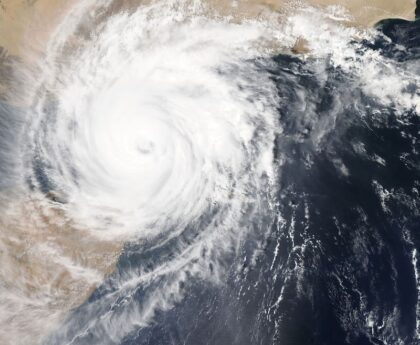### Record-breaking Temperatures in Death Valley
Death Valley, known for its scorching temperatures, reached a sweltering 128F (53.3C) on Sunday, coming close to breaking the global heat record. This comes as the United States is grappling with extreme weather conditions, with approximately one-third of Americans under heat warnings. Death Valley, located along the border of central California and Nevada, has long held the title for being the hottest place on Earth. The highest temperature ever recorded on Earth was 134F (56.7C) in Death Valley in July 1913. Temperatures above 130F (54.4C) have only been recorded a few times in history, mostly in Death Valley.
### Global Warming and Extreme Temperatures
The World Meteorological Organization’s records coordinator, Randy Ceverny, stated that with global warming, such extreme temperatures are becoming more likely to occur. This heatwave in Death Valley is driven by a strong upper-level ridge of high pressure over the western United States. The increase in temperature extremes is a long-term consequence of global warming, while short-term weather patterns contribute to specific events.
### The Unofficial Digital Thermometer at Furnace Creek
Furnace Creek, an unincorporated community within Death Valley National Park, is home to the park’s visitor center. It also features a digital thermometer popular with tourists. On Sunday, people gathered at the thermometer, with some even wearing fur coats as a joke, hoping to capture a photo with a temperature reading that would astound their friends and family. Although the digital thermometer briefly reached 130F, it is not considered an official reading. The National Weather Service recorded a high of 128F on Sunday, which was unlikely to be surpassed as the day progressed.
### Dangers of Heatwaves and Extreme Weather
Heatwaves, while visually less dramatic than other natural disasters, can be more deadly. Last month, a heatwave in parts of the southern and midwestern United States claimed the lives of over a dozen people. Phoenix, Arizona, experienced temperatures of 114F (45.6C) on Sunday, marking the 17th consecutive day of temperatures higher than 110 degrees. The record for the most consecutive days above 110 degrees in Phoenix is 18 days, set in June 1974. The current weather pattern suggests that this record may be broken on Tuesday. Heat records are being shattered not only in the United States but also in Europe. Concurrently, severe flooding has ravaged the northeastern United States, India, Japan, and China, emphasizing the wide-ranging impacts of extreme weather events.
### Long-term Impact of Climate Change
This continuous string of record-breaking temperatures is a reflection of the effects of climate change. July has seen the world experience unprecedented heat levels, based on analysis from the University of Maine’s Climate Reanalyzer. Furthermore, June was recorded as the hottest June on record by several weather agencies. Scientists predict that 2023 has a significant chance of being the hottest year on record. The burning of coal, oil, and natural gas by humans has contributed to long-term climate change, resulting in rising temperatures globally. Although natural climate cycles, such as El Niño and La Niña, can cause short-term variations, most of the current warming is attributed to human-induced climate change.
### Debating Death Valley’s Record
There has been some debate surrounding Death Valley’s record-breaking temperatures. Meteorologists and weather historians have contested the accuracy of Death Valley’s 110-year-old high temperature record. Christopher Burt, a weather historian for The Weather Company, has raised concerns about the validity of the measurements from 1913 and Tunisia in 1931, which recorded temperatures of 134F and 131F, respectively. Burt believes that a recorded temperature of 130F in Death Valley in July 2021 is the most accurate and notable, though it is still awaiting confirmation. There may be other uninhabited places, such as Iran’s Lut Desert, that could potentially match Death Valley’s extreme heat, but without monitoring stations, accurate measurements are unavailable.
### Conclusion
The extreme heat observed in Death Valley, as well as the overall pattern of record-breaking temperatures globally, highlights the urgent need to address climate change. It is crucial to take action to mitigate the long-term impacts of global warming and reduce greenhouse gas emissions. Heatwaves, along with other extreme weather events, will only become more frequent and severe if measures to combat climate change are not implemented. The recent string of extreme weather events serves as a stark reminder of the necessity for collective action to ensure a sustainable and habitable future for our planet.

<< photo by Pawel Czerwinski >>
The image is for illustrative purposes only and does not depict the actual situation.




